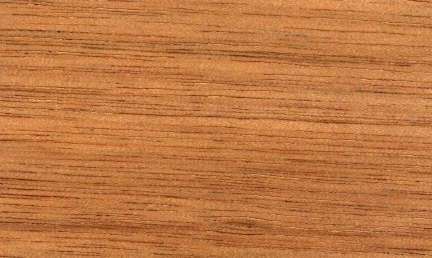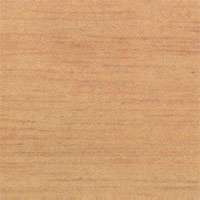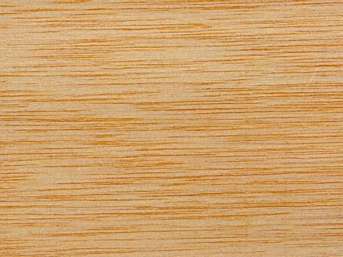  
Ilomba (Pycnanthus angolensis)
Family: Myristicaceae
Common names: Abora, Adre, Adria, African nutmeg, Akomu, Anakue, Antenli, Anwor, Atenli, Bakondo, Bali, Bassa, Bemba, Bokondo, Bokongo, Bosambe, Bosenga, Boxboard, Boyei, Calabo, Cardboard, Cardwood, Dean, Denke, Diehn, Dihin, Dihn, Edna, Edua, Effoi, Ekom, Entro, Escamba, Etama, Etan, Etang, Eteng, Etienh, Etsi, Etsiw, Etsu, Gboyei, Hetere, Ilomba, Kiang, Kombo, Komo, Kpokogi, Kpoyei, Kpoyej, Kuurul, Lamba, Lifondo, Llombo, Lolako, Lomba, Lunaba, Lusenga, Moghan, Moulomba, Mukagato, Mulomba, Munaba, Muno, Mutuje, N'kombo, N'laomba, Nesamba, Netere, Ngitsa, Ngosame, Nigerian boxwood, Obala, Omachan, Ongano, Ote, Oti, Otie, Oualele, Pitchong, Pomponi, Pycnanthus, Qualele, Senga, Tamarkwa, Teke, Ten, Teng, Tian, Tidea, Tika, Tshilombe, Tshimbbuku, Walehe, Walele, Walfle, Whismore, White cedar
Distributed in: Angola, Cameroon, Congo, Gabon, Ghana, Guinea, Ivory Coast, Liberia, Nigeria, Senegal, Sierra Leone, Tanzania, Togo, Uganda (Africa)
Distribution overview: The natural range of the species extends from Guinea to Uganda and Angola in Africa. It grows in lowland forests, and is especially abundant in secondary forests.
Common uses: Bent Parts, Boat building (general), Boxes and crates, Building materials, Cabinetmaking, Canoes, Chairs, Chests, Decorative plywood, Desks, Dining-room furniture, Drawer sides, Excelsior, Fine furniture, Furniture , Furniture components, Furniture squares or stock, Furniture, Hatracks, Interior construction, Interior trim, Joinery, Kitchen cabinets, Light construction, Living-room suites, Matches, Millwork, Model airplanes, Moldings, Office furniture, Paneling, Particleboard, Plywood, Pulp/Paper products, Radio - stereo - TV cabinets, Rustic furniture, Shingles, Stools, Trimming, Turnery, Utility furniture, Veneer, Veneer: decorative, Wainscotting, Wardrobes
Product sources: The ITTO reports that the species is an important source of timber which is exported frequently.
Environment profile: Data source is World Conservation Monitoring Center
Tree size: Tree height is 20-30 m
Colors: the heart isYellow, Yellow to golden-yellow to orangeand the sapwoodRed, Yellow.The grain isWeak figure, the textureMediumand the lusterNon-lustrous
Natural durability: Susceptible to termite attack, Very little natural resistance to decay in ground contact
Odor:
Freshly-Milled wood has unpleasant odor which disappears upon drying
Kiln Schedules: US=T3-C2/T3-C1
Drying Defects: Severe end splitting, Severe twisting/warping
Ease of Drying: Thicker stock is difficult to dry
Tree Identification: Bole/stem form is straight
Comments: General finishing qualities are rated as good The wood may split under frost conditions
Blunting Effect: Slight bluting effect on cutting tools
Boring: Good results
Carving: Good results
Cutting Resistance: Quickly
Gluing: Good properties
Mortising: Responds well to machine tools in mortising operations
Moulding: Good moulding properties
Movement in Service: Good moulding properties
Nailing: Good nailing properties, Holds nails well
Planing: good
Resistance to Impregnation: Permeable
Response to hand tools: Works readily with hand tools
Routing recessing: Mortises readily to yield clean surfaces
Sanding: Good sanding finish
Veneering qualities: Suitable for peeling, Suitable for slicing
Screwing: Good screwing properties, Screwing yields good results; Turning: Responds well to ordinary machine tools in moulding operations
Painting: Good; Polishing: Well defined ; Staining: Reacts with Iron to discolour wood; Varnishing: Good;
- Numerical data Metric
- Numerical data English
- Strength properties
- References
 |
 |
 |
 |
| Item |
Green |
Dry |
Metric |
| Specific Gravity |
0,39 |
|
|
| Density |
|
480 |
kg/m3 |
| Bending Strength |
487 |
736 |
kg/cm2 |
| Crushing Strength |
238 |
395 |
kg/cm2 |
| Hardness |
|
339 |
kg |
| Impact Strength |
|
|
cm |
| Shearing Strength |
|
85 |
kg/cm2 |
| Stiffness |
84 |
93 |
1000 kg/cm2 |
| Tangential Shrinkage |
8 |
|
% |
| Radial Shrinkage |
4 |
|
% |
| Weight |
576 |
480 |
kg/m3 |
| Maximum Load |
|
|
cm-kg/cm3 |
| Toughness |
|
|
cm-kg |
| Static Bending |
|
|
kg/cm2 |
|
 |  |  |  | | Item | Green | Dry | English | | Bending Strength | 6933 | 10474 | psi | | Density | | 30 | lbs/ft3 | | Hardness | | 749 | lbs | | Maximum Crushing Strength | 3394 | 5626 | psi | | Shearing Strength | | 1214 | psi | | Stiffness | 1196 | 1328 | 1000 psi | | Specific Gravity | 0.39 | | | | Weight | 36 | 30 | lbs/ft3 | | Radial Shrinkage | 4 | | % | | Tangential Shrinkage | 8 | | % | | Volumetric Shrinkage | 13 | | % | |
Density (dry weight) = 31-37 lbs/cu. ft. 0
Max. crushing strength = medium 0
Bending strength (MOR) = low 0
Shrinkage, Tangential = fairly large
Modulus of Elasticity (stiffness) = very low
Shrinkage, Radial = moderate
Shearing strength (parallel to grain) = very low
Hardness (side grain) = soft
Bending strength (MOR) = medium
Max. crushing strength = low
Density (dry weight) = 23-30 lbs/cu. ft.
Shrinkage, Tangential = large
Shrinkage, Radial = fairly large
Hardness (side grain) = very soft
Shrinkage, Tangential = moderate
Modulus of Elasticity (stiffness) = low
Shrinkage, Radial = small
Shrinkage, Radial = large
Shearing strength (parallel to grain) = medium
Modulus of Elasticity (stiffness) = medium
Weight = moderate
Shrinkage, Tangential = small
Shearing strength (parallel to grain) = low
Density = medium
Compression strength (parallel to grain) = low
Bending strength (MOR) = very low
Air-Dried condition about 12% moisture content
Bending strength is lower than Mahogany, and much lower than White oak.
It is weaker than Mahogany or Teak
Bertin, A., Meniaud, J.,1949,Timbers of the Cameroons,Compagnie Francais du Cameroon,(Transl. by F.Jane)Bois et Forets des Tropiques,1950,Ilomba (Pycnanthus angolensis,Bois et Forets des Tropiques,No.13,pp39-42Bois et Forets des Tropiques,1975,Ilomba (Pycnanthus angolensis,Bois et Forets des Tropiques,No.159,pp39-54Bois, P.J.,1966,The Strength Properties of Tanzania Timbers,Tanzania Forest Div. Util. Sec. Moshi Tech. Note, No.35Bolza, E., Keating, W.G.,1972,African Timbers - the Properties, Uses and Characteristics of 700 Species,C.S.I.R.O. Div. of Building ResearchBoulton, E.H.B., Price, T.J.,1931,Some Further Notes on Triplochiton scleroxylon,Tropical Woods,4(25, pp3-4Brown, W.H.,1969,Properties and uses of Tropical hardwoods in the United Kingdom. Part 1,Nonstructural properties and uses.,Conference on Tropical hardwoods SC-5/TN-5, Syracuse UniversityBrown, W.H.,1978,Timbers of the World No.1 Africa,TRADA, Red Booklet SeriesChudnoff, M.,1984,Tropical Timbers of the World,U.S.A. Department of Agriculture, Forest Service, Forest Products,Laboratory, Madison.Cooper, G.P., Record, S.J.,1931,The Evergreen Forests of Liberia,Yale School Forestry Bulletin,31,pp1-153Eggeling, W.J.,1940,Indigenous Trees of Uganda,Govt. Printer Entebbe UgandaErfurth, T., Rusche, H.,1976,The Marketing of Tropical Wood A. Wood Species from African Moist Forests,F.A.O. Forestry DepartmentFarmer, R.H.,1972,Handbook of Hardwoods,HMSOForests Products Research Laboratory, U.K.,1956,A Handbook of Hardwoods,Forest Products Research Laboratory, Princes Risborough, Department of,Science and Industrial Research, Building Research EstablishmentFortin, Y., Poliquin, J.,1976,Natural Durability and Preservation of 100 Tropical African Woods,International Development Research Centre, CanadaFouarge, J., Gerard, G.,1964,Bois du Mayumbe,I.N.E.A.C. BelguimFrance - C.T.F.T./C.T.B.,1982,Guide pour le Choix des Essences Deroulables-pour la fabrication du,contreplaque,C.T.F.T./C.T.B. FranceFrance - C.T.F.T.,1966,Bois Tropicaux,C.T.F.T. Publ.,12France - C.T.F.T.,1977,Promotion of African Timbers - New Species,CTFT,35 LeafletsFrance - Comite Nacional des Bois Coloniaux,1931,Etude Physique et Mecanique des Bois Coloniaux,Assoc. Colonies-Sciences & Comite National des Bios Coloniaux, Paris,,FranceGarratt, G.A.,1933,Systematic anatomy of the woods of the Myristicacaeae,Tropical Woods,5(35,pp6-48Ghana - Timber Marketing Board,1969,Ghana Hardwoods,Timber Marketing BoardGutierrez Oliva, A., Plaza Pulgar, F.,1967,Caracteristicas fisico-mecanicas de las maderas Espanolas. (Physical and,mechanical properties of Spanish timbers.,Min.Agric./Dir.Gen Montes/Instituto Forestral de Investigaciones,y,Experiencias, Madrid pp102Hedin, L.,1930,Etude sur la Foret et les Bois du Cameroun,Haut-Commissaire de la CamerounHMSO.1981.Handbook of Hardwoods, 2nd Edition.Revised by R. H. Farmer.Department of the Environment, Building Research Establishment, Princes Risborough Laboratory, Princes Risborough, Aylesbury, Buckinghamshire.Howard, A.L.,1948,A Manual of Timbers of the World.,Macmillan & Co. Ltd. London 3rd ed.Hughes, J.F.,1971,The Principal Timber Trees of Cameroon,Unpublished dataI.U.F.R.O.,1973,Veneer Species of the World,Assembled at F.P.L. Madison on behalf of I.U.F.R.O. Working Party on,Slicing and Veneer CuttingIrvine, F.R.,1961,Woody Plants of Ghana,O.U.P. LondonITTO.1986.Tropical Timber Atlas, Volume 1 - Africa.International Tropical Timber Organization (ITTO) and Centre Technique Forestier Tropical (CTFT, 45bis, Avenue de la Belle Gabrielle, Nogent-sur-Marne Cedex, France.Jay, B.A.,1968,Timbers of West Africa,TRADA, Red Booklet SeriesKeay, R.W.J.1989. Trees of Nigeria.Revised Version of Nigerian Trees . Clarendon Press, Oxford.Keay, R.W.J., et al,1960,Nigerian Trees Vol.1,Nigeria Federal Department of Forest Research, IbadanKennedy, J.D.,1936,Forest Flora of Southern Nigeria,Government Printer LagosKinloch, D., Miller, W.A.,1949,Gold Coast Timbers,Govt. Printer Gold CoastKryn, J.M., Forbes, E.W.,1959,The Woods of Liberia,U.S.A. Department of Agriculture,Forest Products Laboratory, Madison,,Report No. 2159Kukachka, B.F.,1970,Properties of Imported Tropical Woods,Forest Research Paper FPL 125Kunkel, G.,1965,The Trees of Liberia,German Forestry Mission to Liberia Report,No.3Lebacq, L., Dechamps, R.,1967,Contribution a un Inventaire de Forets du Nord-kasai,Musee Royal de L'Afrique Centrale Belgium Annals Series 8 No.5Meniaud, J., Bretonnet, F.,1926,Les Bois Coloniaux d'Afrique dans l'Industrie,Publ. de l'Agence Gen. des ColoniesPieters, A.,1977,Essences Forestieres du Zaire,R.U.G. Gent BelguimRendle, B.J.,1969,World Timbers (3 Vols.,Ernest Benn Ltd. LondonSallenave, P.,1955,Proprietes Phyiques et Mecaniques des Bois Tropicaux de l'Union Francaise,C.T.F.TSallenave, P.,1964,Proprietes Physiques et Mecaniques des Bois Tropicaux (Premier Supplement,C.T.F.T. Publ.,no.23Sallenave, P.,1971,Proprietes Physiques et Mecaniques des Bois Tropicaux (Deuxieme,Supplement,C.T.F.T.Savill, P.S., Fox, J.E.D.,1967,Trees of Sierra LeoneTack, C.H.,1969,Uganda Timbers,Govt. Printer UgandaTakahashi, A.,1978,Compilation of Data on the Mechanical Properties of Foreign Woods (Part,III) Africa,Shimane University, Japan, Research Report on Foreign Wood No. 7Taylor, C.J.,1960,Synecology and Silviculture in Ghana,University College of Ghana Thomas Nelson and SonsTimber Development Association Ltd.,1955,World Timbers (3 Vols.,Timber Development Association Ltd.Timber Development Association,1948,Some New Timbers and Their Uses No. 34,Timber Development Association Limited, London [TRADA]U.S.D.A. Forest Service,1974,Wood Handbook,U.S.A. Department of Agriculture, Forest Service Handbook,72United Kingdom - H.M.S.O.,1954,Report of the Matchwood Working Party,H.M.S.O. for the Board of Trade and Ministry of MaterialsUnwin, A.H.,1920,West African Forests and Forestry,T. Fisher Unwin Ltd. LondonVoorhoeve, A.G.,1965,Liberian High Forest Trees,Centre for Agric. Publishing and Documentation, WageningenWood, B., Calnan, D.,1976,Toxic Woods,British Journal of Dermat 94 Suppl. 13
|










